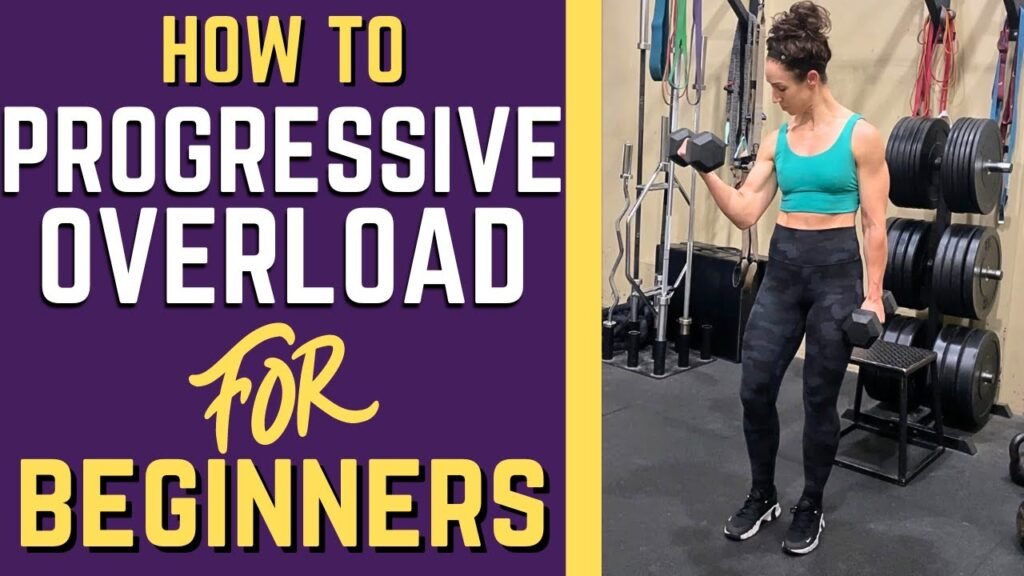
Progressive overload is a fundamental principle in strength training that emphasizes the gradual increase of stress placed on the body during workouts. By systematically challenging your muscles through increased weight, repetitions, or sets, you can achieve continuous strength gains and muscle growth. This guide will explore effective strategies for implementing progressive overload, its benefits, and how to avoid common pitfalls.
Understanding Progressive Overload
What is Progressive Overload?
Progressive overload involves gradually increasing the intensity or difficulty of workouts over time. The goal is to continually challenge your body to adapt, which leads to improvements in strength, muscle mass, and overall fitness. Without progressive overload, your body may reach a plateau where no further gains are made.
Key Components of Progressive Overload:
- Increased Resistance: Lifting heavier weights than previously used.
- Increased Repetitions: Performing more repetitions with the same weight.
- Increased Sets: Adding more sets to your workout routine.
- Reduced Rest Periods: Shortening the rest intervals between sets.
- Improved Technique: Focusing on mastering form and execution.
Why is Progressive Overload Important?
The principle of progressive overload is essential for several reasons:
- Muscle Adaptation: Muscles grow and strengthen in response to increased demands. By progressively overloading them, you stimulate growth and adaptation.
- Avoiding Plateaus: Regularly changing your workout intensity prevents stagnation in progress.
- Enhanced Performance: Continuous challenges lead to improved physical performance in various activities, from daily tasks to sports.
Strategies for Implementing Progressive Overload
1. Increasing Weight/Resistance
One of the most straightforward methods of progressive overload is to gradually increase the weight you lift. This can be done in several ways:
- Add small increments (e.g., 2.5–5 lbs) each week or every other week.
- Focus on compound movements (like squats and deadlifts) where you can safely increase weight without compromising form.
2. Adjusting Repetitions
Increasing the number of repetitions you perform can effectively overload your muscles:
- If you typically do 3 sets of 10 reps, aim for 3 sets of 12 reps in subsequent weeks.
- Gradually increase reps while maintaining good form to ensure muscle engagement.
3. Adding Sets
Increasing the total volume of your workout by adding more sets can significantly enhance muscle growth:
- Transition from performing 3 sets to 4 or more as your strength improves.
- This method increases the overall workload without necessarily increasing weight.
4. Reducing Rest Periods
Shortening rest periods between sets can elevate workout intensity:
- Consider reducing rest by 10–15 seconds every few weeks.
- This method increases metabolic stress on muscles, promoting hypertrophy.
5. Varying Tempo
Altering the speed at which you perform exercises can create additional tension on muscles:
- Slow down the eccentric (lowering) phase of lifts to increase time under tension.
- Incorporate pauses at the bottom of movements (e.g., squats or bench presses) to challenge stability and control.
Benefits of Progressive Overload
Implementing progressive overload into your training regimen offers numerous benefits:
- Continuous Muscle Growth: Regularly challenging your muscles promotes hypertrophy and increases muscle mass over time.
- Improved Strength: As you increase resistance or volume, your overall strength improves, allowing you to lift heavier weights in other exercises.
- Enhanced Endurance: Increasing repetitions and reducing rest periods can improve muscular endurance, beneficial for both strength training and cardiovascular fitness.
- Injury Prevention: Gradually increasing workload allows your body to adapt safely, reducing the risk of injury associated with sudden increases in intensity.
- Motivation and Engagement: Seeing consistent progress through incremental changes keeps workouts engaging and motivates continued effort.
Common Mistakes to Avoid
While implementing progressive overload is essential for growth, several common pitfalls can hinder progress:
- Increasing Too Quickly: Adding too much weight or volume too soon can lead to injury or burnout. A gradual approach (typically no more than a 10% increase per week) is recommended.
- Neglecting Form: Prioritize proper technique over lifting heavier weights. Poor form increases injury risk and reduces effectiveness.
- Ignoring Recovery: Adequate rest is crucial for muscle recovery and growth. Ensure you’re allowing enough time between workouts targeting the same muscle groups.
- Sticking with a Routine Too Long: While consistency is important, sticking with the same routine without adjustments can lead to plateaus. Regularly assess and modify your workout plan.
- Focusing Solely on Weight Increases: Remember that progressive overload can also involve increasing repetitions or improving form—weight isn’t the only metric for progress.
Example Progressive Overload Workout Plan
Here’s a sample plan demonstrating how to apply progressive overload over several weeks:
Week-by-Week Progression
| Week | Exercise | Sets | Reps | Weight |
|---|---|---|---|---|
| 1 | Barbell Squat | 3 | 10 | 100 lbs |
| 2 | Barbell Squat | 3 | 10 | 105 lbs |
| 3 | Barbell Squat | 3 | 12 | 105 lbs |
| 4 | Barbell Squat | 4 | 10 | 110 lbs |
| 5 | Barbell Squat | 4 | 12 | 110 lbs |
| 6 | Barbell Squat | 4 | 12 | 115 lbs |
This table illustrates how you can manipulate weight, reps, and sets over six weeks while ensuring continuous progression.
Conclusion
Mastering progressive overload is essential for anyone looking to achieve continuous strength gains and muscle growth in their training regimen. By systematically increasing weight, repetitions, sets, or adjusting rest periods, you can effectively challenge your body while minimizing injury risk. Remember that patience and consistency are key; gradual improvements will lead to significant long-term results. Implement these strategies into your routine and watch as you break through plateaus and reach new heights in your fitness journey!
